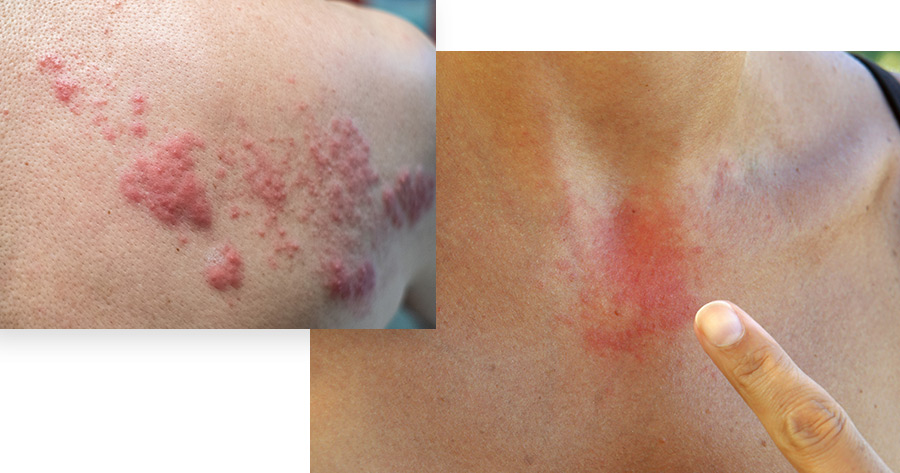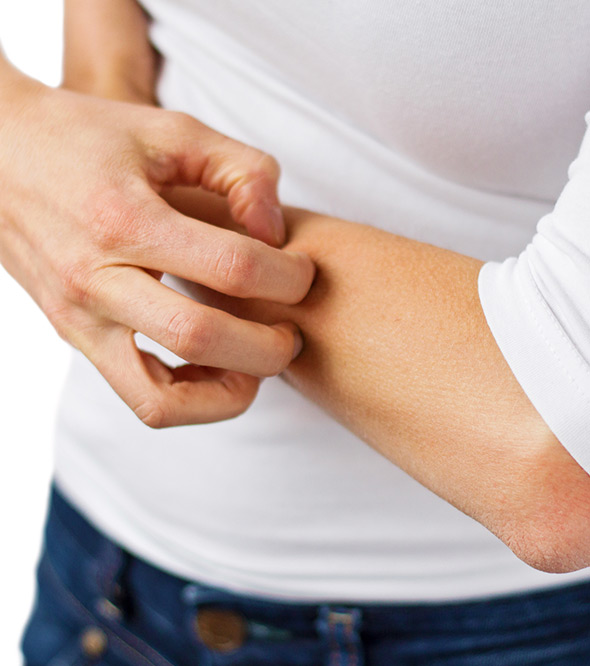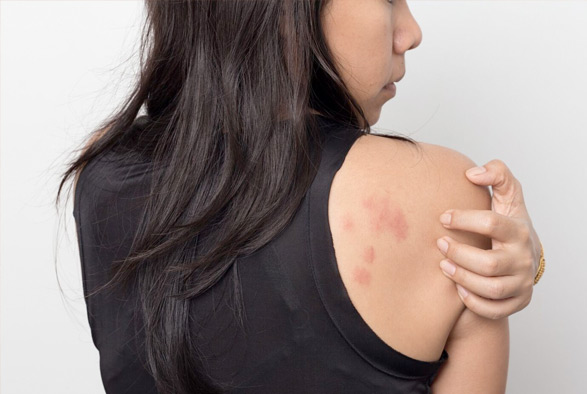Rash Treatments at Advanced Dermatology P.C.
Rashes are typically defined as any change in the skin’s normal color, appearance, or texture. A rash may appear across the entire body or be localized in one area. Rashes vary greatly in appearance and can be caused by a variety of factors. It is important to identify the cause of a rash before determining treatment. Our dermatologists provide rash treatment in NJ and surrounding areas. If you are suffering from a rash, please contact one of our NY or NJ offices to find relief today.


Causes of a Rash
The cause of a rash can often be difficult to identify. Bacterial, viral, and fungal infections may cause a skin rash in some patients. For example, shingles, chicken pox, and impetigo typically result in noticeable, and sometimes painful, rashes. Other people experience rashes in response to extreme weather changes, such as dry air, cold weather, and high temperatures (“heat rash”). Rashes can indicate the presence of a chronic skin condition, such as psoriasis, eczema, or acne.
Symptoms of a Rash
Rashes manifest as a change in the skin’s normal appearance. When suffering from a rash, your skin may feel warm, itchy or painful. In other cases, there may be no discomfort, but only a change in color or texture. You may notice bumps or blisters on the skin, or a dry and cracked appearance. If you observe any significant change in your skin that does not resolve within a few days or recurs frequently, you should see a skin doctor.
Diagnosing a Rash
To diagnose a rash, your dermatologist will examine your skin and ask you a number of questions. He or she will need to understand how long you have had the rash, if you have had a similar rash before, and if you are experiencing any other symptoms. Diagnosis is an important first step in treating rashes, as the treatment plan will be based upon the type and cause of the rash. In some cases, a rash may indicate a larger health problem, so it is important to seek the help of a qualified doctor when you are experiencing a rash.
There is not one particular treatment for a skin rash. The treatment that your doctor recommends will be based upon the symptoms of your rash and the cause of the rash, if it can be identified. You may be told to avoid certain substances, to cleanse the area with a prescription wash, or to apply an ointment to the rash. Once your doctor has gained an understanding of your rash, a treatment plan can be created. You will typically be asked to return for a follow up visit to ensure that the treatment is helping to improve your condition.If you are concerned about a skin rash, please contact one of our offices to make an appointment. We have locations throughout central New York, Westchester County, and Nassau County.

